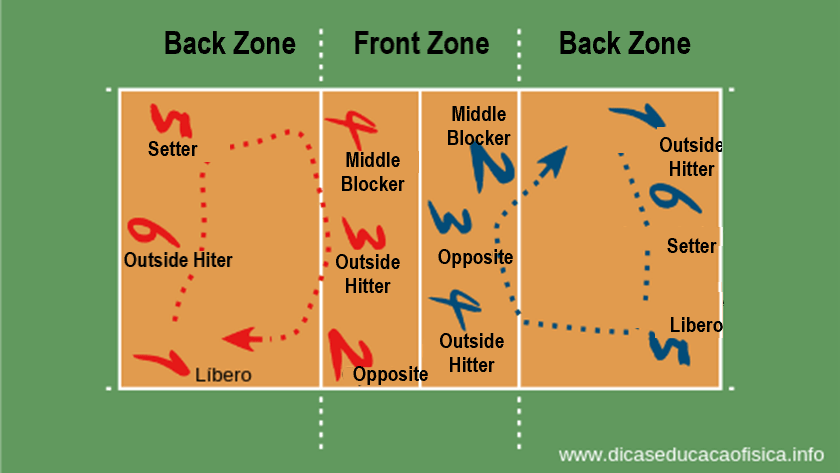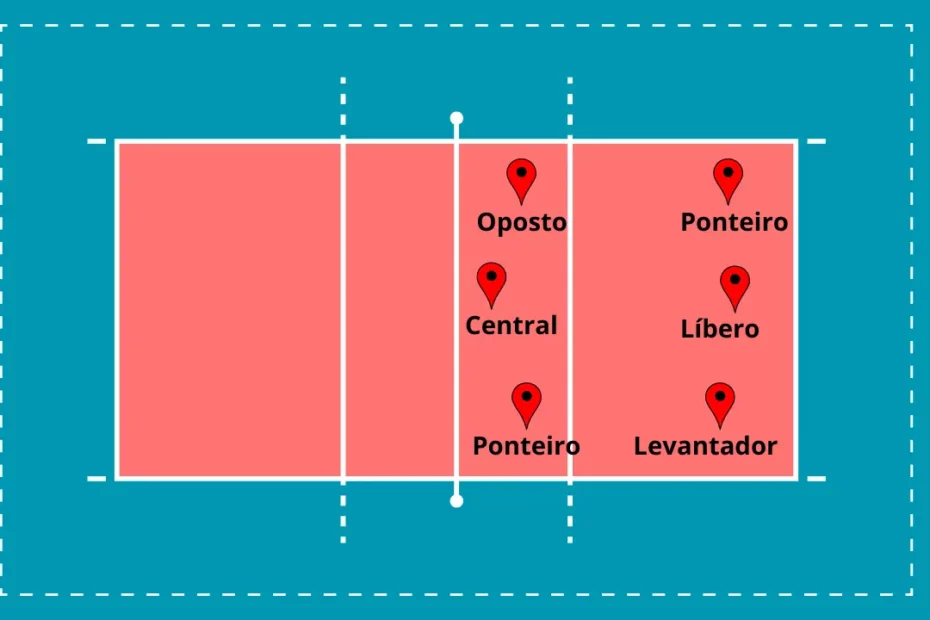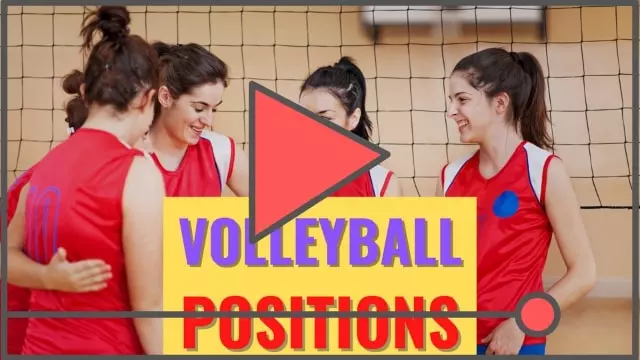WHICH ARE THE VOLLEYBALL POSITIONS (ROLES)?
The Volleyball positions (roles) are: the setter, the middle blocker, the Outside Hitter, the opposite and the libero.
VOLLEYBALL PLAYERS POSITIONS
THE SETTER
The Volleyball Setter is the “brain” of a team, as he is responsible for planning the attacking moves. He’s the one who’s going to decide if the team will make a fast or slow attack.
The main technique used by the setter is the “Set“, but he can also use the “dig” or other creative technical resource to conduct a set and prepare his team attack.
After the service of the opponent team, the reception players will try to pass the ball to the front zone, close to the net, so the setter can have a better position and perform the second team contact with the ball, preparing the attack.
THE MIDDLE BLOCKER
The Middle Blocker is almost always the tallest player on a Volleyball team, due his main duty of block. The middle blocker is positioned at the center of the attack zone (position3), is the protagonist in the team “blocks” and responsible for attacking the fast and short balls from the setter.
In the back-row (positions 5, 6 and 1) he/she is almost always replaced by the libero, because rarely a middle blocker has as technical characteristics to be a good defender.
THE OUTSIDE HITTER
The Outside Hitter is an attack expert, especially in position 4, and also composes the block line along with the middle blockers.
In any rotation, the outside hitter composes the reception system along with the libero and another outside hitter.
The outside hitter usually also performs attacks from the back-row, commonly from position 6, in a combination with the middle blocker in position 3, spiking a called “pipe” attack.
THE OPPOSITE
The Opposite is the player who receives the highest volume of balls from the setter to attack.
The term “Opposite” comes precisely from the fact that he always positions himself in a diagonal relation with the setter.
In the front zone, the opposite typically plays in position 2 and helps form the block along with the middle blockers.
In the back-row, the opposite normally does not participate in the reception system, being hidden behind the outside hitters and the libero, free to perform an attack from behind 3 meters line, in position 1.
THE LIBERO
Libero is a player expert in reception and defense, always performing in the back-row.
The libero usually replaces the middle blocker in the back zone.
There are several limitations to the libero, such as not being able to attack, not be able to block, and not to set using both hands (setting technique) standing in the front zone. If that happens, the other players cannot perform an attack reaching the ball over the top of the net.
TACTICAL POSITIONS x ROTATION POSITIONS
Here we will differentiate what are the tactical positions from the rotation positions.
Tactical Positions: tactical positions are the positions that players assume according to their technical and physical characteristics. Example: the setter.
Rotation Positions: These are the positions that the players occupy, obligatorily, on the court due to the rule of service rotation. The back-row positions are 1,5 and 6 and the front-row positions are 4,3 and 2.
Players must respect the service rotation positions, however, after the contact with the ball from the service player, they can move around the court and occupy the position most appropriate to their tactical function in the game.

Example 01: Imagine that in the image above the red team will receive the service. ➤ before the service, the setter of the red team that is in the position 5 will be hidden behind and not take part of reception. ➤ After the service of the opponent, the setter will run to the attack zone, perform the second team contact, setting the ball for one spiker.
Example 02: Now imagine that in the image above the red team will serve. ➤ The setter is in the position 6 moves front, just behind the opposite in position 3, but still between players in position 1 and 5, in the relation with the sidelines. ➤ After the service, the opposite occupying position 3 will move to position 2; ➤ and the middle blocker occupying position 2 will move to position 3.

